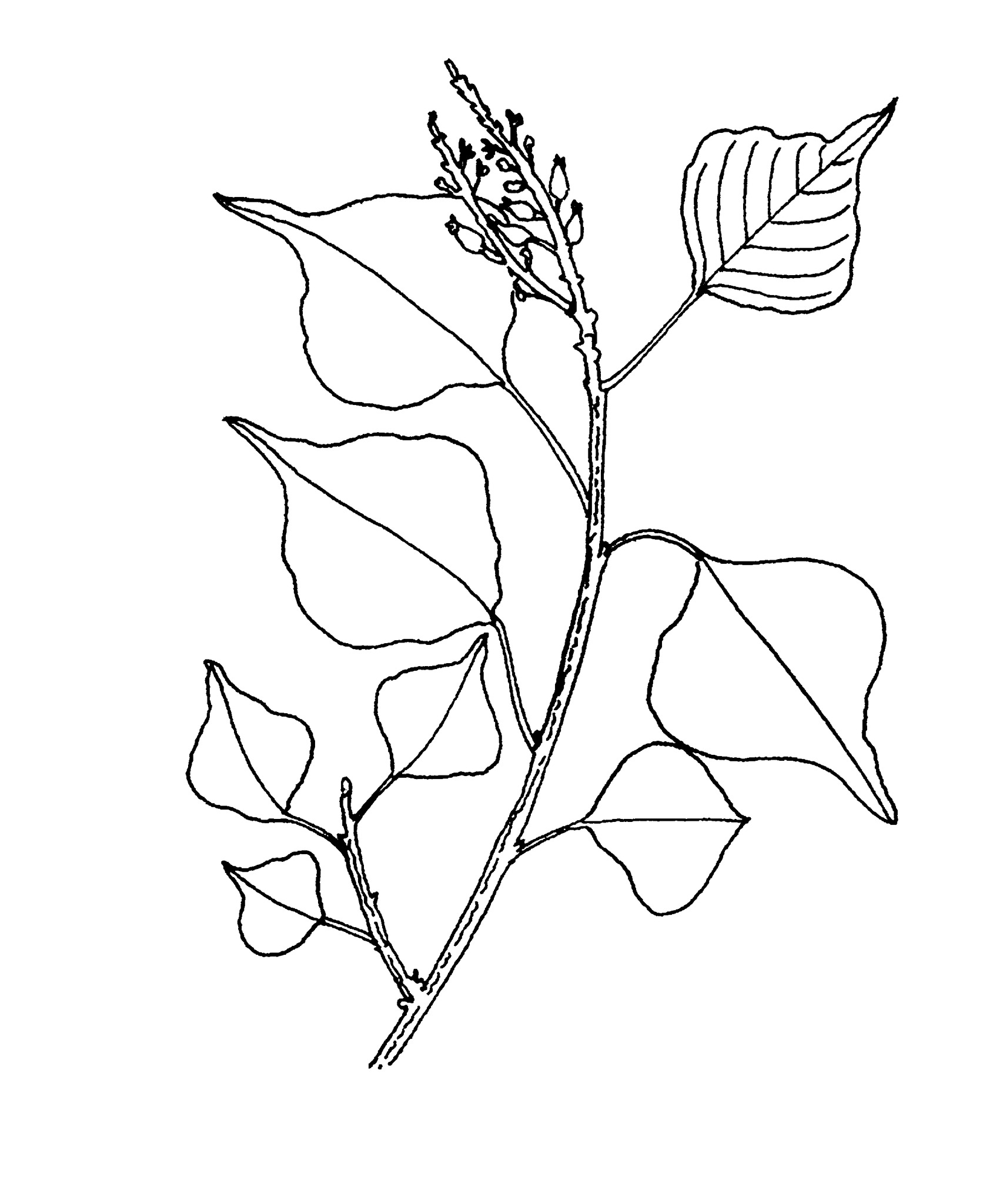
Derived from a classical name used by Pliny (23–79BC) for a resinous species of Pinus which was based on the Celtic for sap (fat), alluding to the sticky latex.
Shrubs, trees or lianes, evergreen, perennial, male and female flowers on the same plant or rarely on separate plants; stems and foliage with watery-white latex. Indumentum of simple, multicellular hairs, generally absent. Stipules entire, inconspicuous, soon shed. Leaves alternate, stalked, unlobed, penninerved, with 2 glands at blade base; margins entire or toothed. Inflorescences terminal, leafopposed or axillary, spike-like or racemiform, bisexual and usually androgynous, with flowers in bracted clusters. Male flowers stalkless or stalked; calyx lobes 2-4, overlapping or edge to edge, partially fused; petals absent; disk absent; stamens 2-4, filaments free or slightly fused at base. Female flowers stalked; calyx lobes 2-4, overlapping, free or variously fused; petals absent; disk absent; ovary 2-4-chambered, ovules 1 per chamber; styles 2-4, free or united at the base, entire. Fruits capsular, dehiscent, 3- or 4-lobed, surface smooth. Seeds roundish to oblong, ecarunculate.
About 100 species in the neotropics and Asia. 1 species is commonly cultivated.
Seeds or cuttings.
Tree, foliage with watery-white latex; leaves 2-glanded at blade base.
Howes (1949), Hsieh (1977), Radcliffe-Smith (1987).
Source: (2002). Euphorbiaceae. In: . Horticultural Flora of South-eastern Australia. Volume 3. Flowering plants. Dicotyledons. Part 2. The identification of garden and cultivated plants. University of New South Wales Press.
